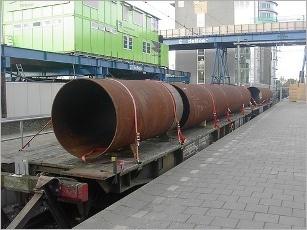Page 1 of 2On average, oil and gas companies, and water/wastewater industries, use six per cent of their annual income to combat corrosion; here are some of the causes and preventatives
Product quality, sanitation and health issues are major concerns in all process industries. Industries cannot afford to tolerate corrosion in the processing equipments and operations, as this increases the total cost of ownership of the equipment, as well as pose a threat to the environment.
Types of Corrosion
Uniform or Generic Corrosion: This can be said to have occurred when the metal loss is uniform from the surface. It is often characterised with high velocity fluid erosion, with or without abrasives.
Pitting Corrosion: In this type of corrosion the metal loss is randomly located on the metal surface. This often combines with stagnant fluid or in areas with low fluid velocity.
Galvanic Corrosion: Happens when two metals with different electrode potentials are connected in a corrosive electrolytic environment. The anodic metal develops deep pits in the surface.
Crevice Corrosion: This type of corrosion can only occur at places with gaskets, bolts, and cap joints where crevices exist. Crevice corrosion creates pits similar to pitting corrosion.
Concentration Cell Corrosion: This occurs when the metal surface is exposed to an electrolytic environment where the concentration of the corrosive fluid or the dissolved oxygen varies. This often combines with stagnant fluid or in areas with low fluid velocity.
Graphitic Corrosion: This type of corrosion occurs mostly in cast irons and occurs when the cast iron loses its iron ion in salt water or acids, which leaves the graphite in place, resulting in a soft weak metal.
Microbiological Induced Corrosion (MIC): This is usually caused by biological growth in pipes and piping systems, causing corrosion by providing an enabling an environment for physical and chemical interactions to occur. A layer of biofouling on any surface in the condenser water system acts as a safe place for aerobic and anaerobic activity, potential corrosion and accumulation of scale and bacteria formation. By reducing bio-fouling, the potential for corrosive activity is greatly eliminated.
Symptoms of corrosion
Sediment and particulate: Particles and sediments of rust tend to build-up as a reddish-brown sediment. This is usually seen on the surface of the pipe and other associated equipment.
Colour in water: Look for orange, green, yellow or blue colours in water as evidence of metallic corrosion.
Leaks in tubing/piping, appliances or fixtures: Water droplets or crustaceous deposits on the outside of piping are symptoms of further problems within.
Tastes and Odours: Corroded iron, brass and copper will cause water to have a bitter or metallic taste and an unpleasant odour.
Causes and accelerators
1. High water temperature: It is advisable to know that as water temperature rises chemical and electrochemical reactions become more active. Warm water is also more likely to librate dissolved CO2, which contributes to additional issues.
2. High water flow rate: When flow velocity is excessive, pitting becomes the unavoidable outcome.
3. Low PH: A good water PH range is between 7.0 and 8.4.
4. Chlorine, chloramines and chlorides: Common disinfectants like chlorine and chloramines have a devastating effect on the integrity of metallic components in plumbing systems and even on rubber materials. Chlorides are the Achilles heel of stainless steel and contribute to conductivity problems. Be careful when deploying anion-based systems, as they will contribute additional chlorides to the water.
5. Dissimilar metals in contact: To control galvanic action, avoid direct connection of dissimilar metals, and maintain a differential of 0.15V or less on the Anodic Index.
6. High conductivity/TDS: As conductivity increases further than 1,000 micro-siemens (approximately 500 ppm TDS), the likelihood of corrosion increases.





















